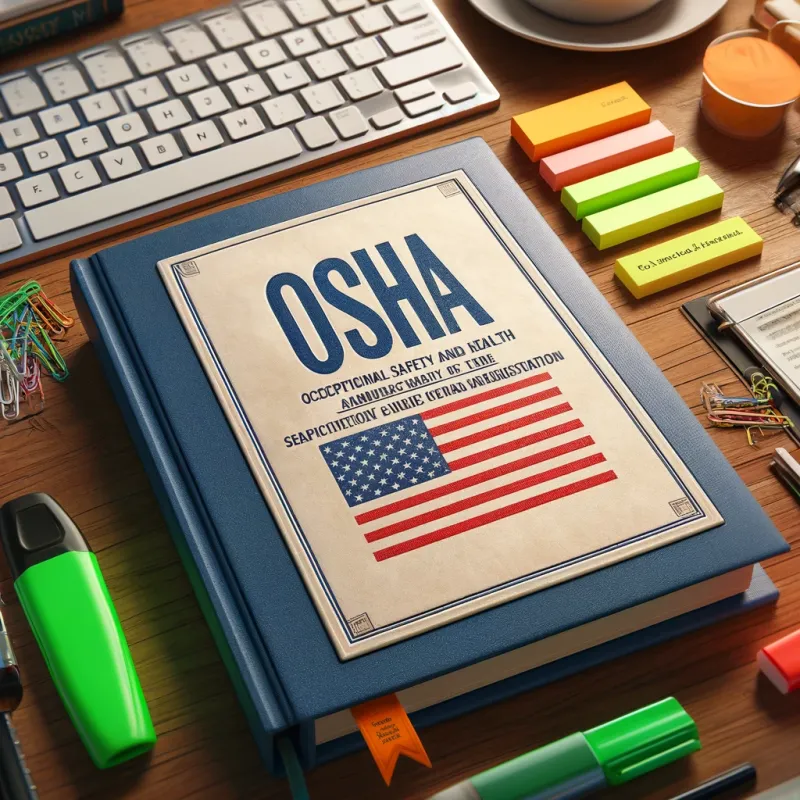Chemical regulations
Americas
USA - OSHA's Hazard Communication Standard (HCS) 2024
What is OSHA's Hazard Communication Standard (HCS) 2024?
The Occupational Safety and Health Administration (OSHA) has updated its Hazard Communication Standard (HCS) to align primarily with the seventh revision of the Globally Harmonized System (GHS). The 2024 update to the HCS continues to focus on ensuring that the hazards of all chemicals are communicated effectively to employees, improving safety in the workplace by maintaining consistency in hazard classification, labeling, and safety data sheets (SDS).
What are the mandatory sections of a Safety Data Sheet (SDS) under HCS 2024?
The Safety Data Sheet (SDS) must include 16 specific sections:
-
Identification
-
Hazard(s) Identification
-
Composition/Information on Ingredients
-
First-Aid Measures
-
Fire-Fighting Measures
-
Accidental Release Measures
-
Handling and Storage
-
Exposure Controls/Personal Protection
-
Physical and Chemical Properties
-
Stability and Reactivity
-
Toxicological Information
-
Ecological Information
-
Disposal Considerations
-
Transport Information
-
Regulatory Information
-
Other Information
Section 15 is particularly critical for ensuring compliance with national and regional regulations that may impact the use, handling, and disposal of chemicals. This section helps bridge the gap between global standards and specific national requirements, ensuring that companies comply with all applicable laws.
- Chemical Inventories: This refers to lists maintained by various countries that track chemicals manufactured, imported, or used within their borders. For instance, the TSCA Inventory is maintained by the U.S. EPA and includes all chemicals that can be legally manufactured or imported into the United States. A chemical’s presence or absence on such an inventory can affect its regulatory status.
- Right-to-Know Inventories: These are state or local requirements that mandate disclosure of chemical hazards to workers and the public. For example, under California’s Proposition 65, businesses must provide warnings about significant exposures to chemicals that cause cancer, birth defects, or other reproductive harm.
- National Regulations: This could include a variety of regulations from different agencies, such as OSHA’s standards for workplace exposure limits, the EPA’s rules on chemical reporting and management, and the Department of Transportation’s regulations on the transportation of hazardous materials.
By ensuring that Section 15 is detailed and up-to-date, companies can avoid regulatory penalties and enhance safety and transparency in their operations.
How does HCS 2024 address labeling requirements?
The HCS 2024 requires that chemical containers include the following on their labels:
-
Product identifier
-
Signal word
-
Hazard statement(s)
-
Pictogram(s)
-
Precautionary statement(s)
-
Name, U.S. address, and U.S. telephone number of the manufacturer or responsible party
The standard also introduces specific labeling requirements for small containers and provisions for labels on bulk shipments, aligning with Department of Transportation (DOT) regulations to avoid conflicts.
Labeling for Consumer Products: While HCS 2024 primarily governs workplace labeling, consumer products may also fall under different regulatory frameworks depending on their use and distribution. Specifically, the labeling of hazardous consumer products is regulated by the Consumer Product Safety Act (CPSA) and the Federal Hazardous Substances Act (FHSA).
-
Consumer Product Safety Act (CPSA): The CPSA, enforced by the Consumer Product Safety Commission (CPSC), oversees the safety of consumer products, ensuring they do not pose unreasonable risks of injury or harm. Under the CPSA, consumer product labels must provide adequate warnings and instructions to prevent injury, including labeling that informs consumers of any potential chemical hazards.
-
Federal Hazardous Substances Act (FHSA): The FHSA requires that certain hazardous household products bear labels that alert consumers to the risks of using these products. Labels must include warnings about the potential hazards (e.g., flammability, toxicity, corrosivity) and instructions for safe handling, storage, and disposal. The FHSA applies to consumer products that may cause substantial injury or illness during any customary or reasonably foreseeable handling or use.
These laws complement OSHA's HCS by ensuring that consumer products containing hazardous chemicals are appropriately labeled, even when those products are intended for home use rather than occupational settings. Together, these regulations provide a comprehensive framework for chemical safety, from industrial environments to consumer households.

What are the mandatory training requirements under HCS 2024?
Employers must train employees on the new label elements and the SDS format introduced by the HCS 2024. Training must ensure that employees understand how to read and interpret labels and SDSs and are aware of the hazards associated with chemicals they may encounter in the workplace. OSHA has provided specific compliance timelines for training based on the effective dates for substances and mixtures.
Become an expert in OSHA's Hazard Communication Standard (HCS) 2024



